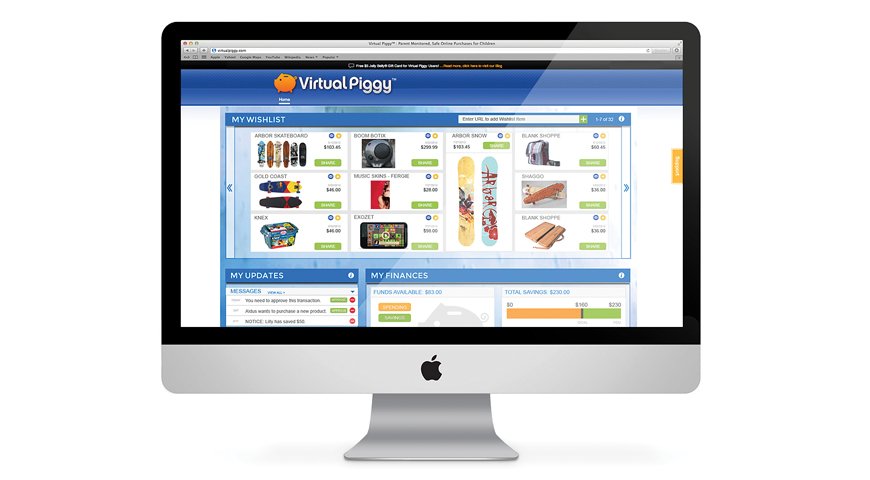A veteran CEO of several software companies, Jo Webber launched Virtual Piggy in January 2012. Her goal? To provide a safe forum for children to spend and save online while learning how to manage their money.
Q: What is Virtual Piggy?
We created a technology that empowers children to make financial choices, but with parents in control. Parents can look at it as an online monthly allowance; they give their children money each month to use at approved online merchants, and also set up savings and philanthropy goals.
Why is this especially important for high net worth families?
As a high net worth parent, you often have the ability to give your kids so much more than you grew up with. And most high net worth people are very busy. So I think those two factors can cause real problems. One is the tendency to want to give your children whatever they want, and the other is that you are too busy to supervise their spending. But Virtual Piggy sets up a whole conversation around financial management, not just the spending component.

What’s wrong with a cash allowance?
It’s an antiquated system. When I was growing up, my mum would give me some money and I could go down to the corner store and buy things. But after I had kids, I noticed how different it was for them—all children are online. But when they want to buy things online, there is no mechanism in place for them to safely do so.
Why not?
The federal Children’s Online Privacy Protection Act states that a website cannot ask a child, defined as someone under 13, for anything that identifies them. Email addresses are a no-no. Shipping addresses, too—they allow marketers to identify a child. But our technology allows children to make a transaction online without identifying themselves.
So how does Virtual Piggy work?
A parent sets up an account, like a family wallet. They choose how to fund the account, whether through a credit card or Pay- Pal. They choose usernames and passwords for their kids and set up all the controls for the family—like how much they can spend and where they can shop. Then children can make purchases online as long as they have enough money set aside in their Virtual Piggy accounts and the merchant is approved by the parents. When the kids click “purchase,” the address and payment information is supplied by Virtual Piggy.

Why not just give my child my credit card information?
That’s when all hell breaks loose. First, kids hold on to parents’ credit card information. There’s no control over where they spend and how much they spend. If you then look at your bill and say, I didn’t make this purchase, that’s called friendly fraud.
What part of Virtual Piggy helps children learn about managing money?
There is a dashboard on the Virtual Piggy site where the child can see quickly how much they’ve spent, how much they’ve saved and how much they’ve put aside for charity. So the kid starts to be able to see, Wow, I bought that skateboard for $100 and it is sitting in the corner of my room. They get some of that buyer’s remorse. If a parent just keeps handing them stuff, there’s no buyer’s remorse.
What about saving and philanthropy?
There is a savings component which links to a bank account, so the child can move the money they want to save into the account online. They can also move money aside for charities that they pick out. And the parents can see if children aren’t meeting their goals.
For more information, visit virtualpiggy.com or contact Jo Webber at [email protected] or 310.853.1950.






